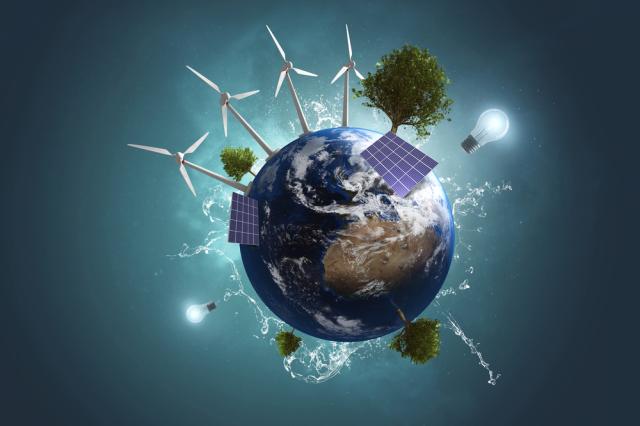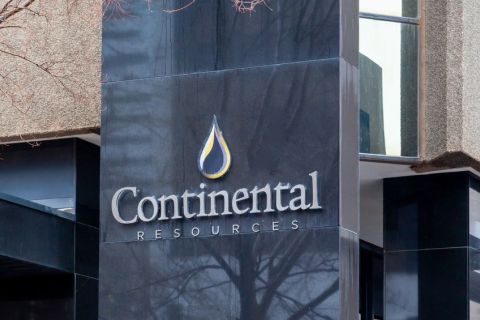
Among the 555 global executives polled, 45% of oil and gas sector leaders felt they were prepared to transition to net zero emissions by 2050. (Source: Shutterstock)
Net-zero greenhouse gas emissions has long been the goal of companies in the energy industry as they look for ways to supply countries’ energy needs while keeping the environment safe. Despite the energy trilemma of energy security, sustainability and affordability, the Baker Hughes Energy Transition Pulse report, released Jan. 25, found that organizations are still bullish on their ability to achieve this goal.
The report surveyed a total of 555 global executives across 21 countries during the second half of 2022. Among those polled, 45% of oil and gas sector leaders felt they were prepared to transition to net zero emissions by 2050. That’s up from just 28% of oil and gas respondents in 2021.
One reason companies feel strongly about net zero emissions, especially in the face of the European energy crisis, is due to a lack of practical solutions.
“Hydrocarbons are going to play a role for decades,” Baker Hughes CEO Lorenzo Simonelli said in the report. “The most important thing is applying technology we have today to reduce the emissions of those hydrocarbons and to clean them as much as possible. It’s about reducing emissions, not fuel sources, and we cannot forget that.”
One pragmatic solution is diversifying energy sources.
“We are using LNG and alternative fuels while really trying to live with less gas,” said Ilham Kadri, president and CEO of the Executive Committee of Solvay, a global leader in materials, chemicals and solutions. “The crisis is an opportunity to build that infrastructure faster and with less permitting time, and it’s vital for the competitiveness of the European industrial footprint.”
About 57% of the respondents said they are investing or planning to invest in natural gas and LNG in response to the energy security crisis. Investment in natural gas, solar and biomass/waste-to-energy is the future for companies in the energy sector, according to the summary released with the report. Investment in lower-carbon energy is particularly popular in the Americas, due to the region’s low share of renewables compared with its abundance of shale gas.
In response to the European energy crisis, parts of the world with decreased access to oil and gas for energy have shifted back to burning coal for power generation. The report found that demand for coal, which is much cheaper but more emissions-intensive, is rebounding to levels last seen in 2013. In the Asia-Pacific region, many countries are experiencing the effects of climate change and extreme weather and preparing for operational disruptions is the most important way to secure access to energy.
About 50% of respondents in Asia-Pacific, where coal still accounts for most of the region’s power generation, say that their organizations are unprepared to achieve net zero by 2050, up from 36% of respondents in the 2021.
One possible solution to combat the rise of coal is hydrogen. However, only 30% of respondents say they will prioritize the use or investment in hydrogen over other synthetic fuels, as hydrogen needs a more extensive infrastructure and more advanced technology to “be what we all want it to be,” Mark Nelson, Chevron’s executive vice president of strategy, policy and development, said in the report.
Exxon Mobil is advancing on a Gulf Coast project, which has touted as the world’s largest low-carbon hydrogen facility, announcing Jan. 30 it has awarded a FEED contract to Technip Energies. A final investment decision is expected by 2024.
“We need more technology development that helps with the cost of manufacturing and transportation,” Nelson said. “Then, on the evolution of the demand side, the industry needs to have equipment that can use hydrogen in ways it is not being used today. We are building partnerships so we can get industrial applications and transportation applications moving.”
A successful transition requires strong partnerships between government, society, industry and the business community. For new technologies and energy systems to develop, companies need to nurture a culture of collaboration and innovation. In Europe, the Middle East and Africa, 40% of those surveyed said that creating jobs and reskilling for an energy transition-ready workforce is the most meaningful way to balance energy security and access to sustainable energy, even more so than investing in lower carbon energy and preparing for operational disruptions.
The Pulse report found that availability of technology and culture change were the two most important factors in accelerating energy transition.
“Technology is going to be absolutely imperative to start driving down the cost of some of the elements required to make this energy transition viable,” Australia’s Woodside Energy CEO Meg O’Neill said.
Recommended Reading
Permian Resources Continues Buying Spree in New Mexico
2024-01-30 - Permian Resources acquired two properties in New Mexico for approximately $175 million.
Marketed: Williston, Powder River Basins 247 Well Package
2024-03-11 - A private seller has retained EnergyNet for the sale of a Williston and Powder River basins 247 well package in Sheridan, Montana, Burke and McKenzie counties, North Dakota and Campbell County, Wyoming.
Continental Resources Makes $1B in M&A Moves—But Where?
2024-02-26 - Continental Resources added acreage in Oklahoma’s Anadarko Basin, but precisely where else it bought and sold is a little more complicated.
Benchmark Buys Revolution Resources’ Anadarko Assets in $145MM Deal
2024-02-20 - Benchmark Energy II is acquiring Revolution Resources just over four years after Revolution bought out Jones Energy Inc.’s Midcontinent portfolio.
Marketed: Rock Oil Holdings Mineral, Royalty Opportunity in Midland Basin
2024-04-09 - Rock Oil Holdings has retained PetroDivest Advisors for the sale of a mineral and royalty opportunity in Howard County, Midland Basin.




